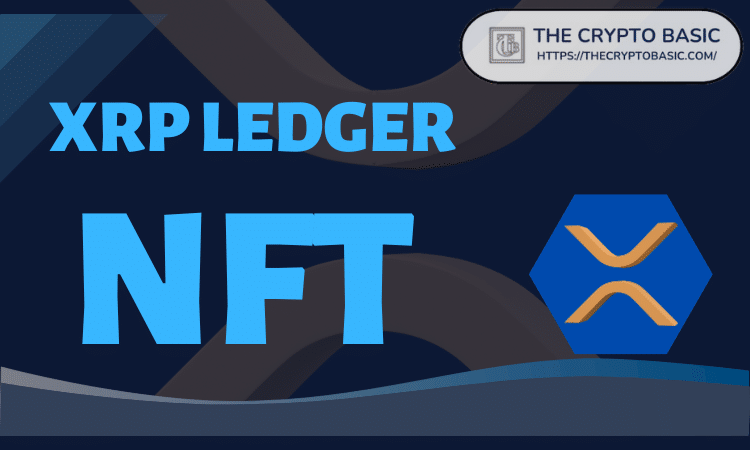Everything you need to know

If you’re already familiar with Outside Inc.’s flagship NFT, the Outerverse Passport, we won’t bury the hatchet: they go on sale Wednesday, July 20 at Outside.ioand you can buy one for $225 with a credit card, no crypto needed.
If you need a refresher, the Outerverse Passport is essentially an entry ticket to Outerverse, Outside Inc.’s multifaceted Web3 initiative. With the pass, fans will have access to everything the company is building to support Web3, including an NFT marketplace that sells unique digital artwork, a society of creators and peers on Discord, and real-world benefits like gear discounts, event listings, and a three-year O+ membership.
Only 10,000 passes will be created (“stamped” in crypto parlance), although the company has a roadmap for future NFT declines from Outside the creative communitywhich includes photographers like Chris Burkard, artists like James Arnold and athletes like Sasha DiGiulian. Each of these drops—along with everything the company intends to do as part of Outerverse—is designed to fulfill Outside’s mission: to get everyone outside.

But why NFTs?
If that’s all the information you’re looking for, great. If the whole Marriage off blockchain still mystifying you, read on. (In the interest of absolute disclosure, this is a move from our own parent company we’re in the process of unbundling.)
There is a lot of fervor, debate and confusion about NFTs right now, and for good reason. Any explanation of the technology behind them is, for most, either a rapturous affirmation that the internet has finally become the tool it was 40 years ago, or a thicket of confusing jargon. Are they new and flashy? Yes. Can they make boatloads of money for the companies and creators that produce them? Also yes.
Skeptics will observe that combination and think “car”. But if you ask the boosters, the promise of Web3 (the “new” vision of the internet, powered by the same technology that makes NFTs possible: blockchain) isn’t just that it will generate more digital bangs and maybe make some people rich; it’s that technology will actually make our lives easier and fairer, make our work more productive and—at best—make us happier.
How? For Outside, the potential benefit of NFTs is simple: they offer a way to directly reward people for spending time outdoors.
What the pass actually gives you
“We see NFTs as another useful piece of equipment to add to your kit,” says external managing director Robin Thurston. “Like any good outdoor tool, an NFT should blend form and function. That’s why we put real benefits into every minting – benefits that inspire you to get outside.”
You’ll hear that line again and again as Outside delves further into Web3: it’s about getting people out. Thurston himself is deeply concerned about Americans’ increasing disconnection from anything that isn’t sent to them via LED screen, and wants to do something about it. “Today, the average American checks their phone 344 times a day, and screen time for children ranges from four to more than nine hours daily,” he says. “It’s a huge problem, not only for the well-being of children, but for the health of our society and the planet.” Outside’s NFT project is partly an attempt to combat that trend.

If that all sounds a little optimistic—using emerging technology to help wean people off technology—just look at what Outside’s new NFT is doing, Thurston urges. Outside envisions a kind of gamification that passport holders participate in on their own terms.
Imagine automatically earning a free boot fitting after five days on the slopes this winter, or a free bike upgrade after riding 100 miles, all made possible by the technology built into the pass. Those are the kinds of “real benefits” the company talks about: incentives to get outside that hopefully drive more people away from computer screens and into the fresh air.
And the reward game is just one feature. The passport also gives early access to selected launches at Outside’s new NFT marketplace, entry into events, and a list of other attractive benefits that the company has promised will continue to grow over time. At a recent NFT conference in New York City, attendees got a taste of what those benefits will look like when Jack Johnson performed a private rooftop concert for holders of the Outerverse Bedrock Badge—a precursor to the pass—and hung out afterward to rub shoulders with the crowd .
If you’re not interested in the backend technology of it all, it’s as complicated as the pass needs to be, the company says. Blockchains can be mysterious and confusing, but listening to music on the roof is not.

The new creative economy
That all sounds pretty good to the users, but what about the people who actually make the things that will appear on Outside’s new NFT marketplace, the photographers and writers and musicians?
One of the hallmarks of Web3 is that users control their own data, and creators control their own digital goods (for a high-level explanation, here is a good place to start). This is very different from Web 2.0, the version of the Internet most people use today, where the buying and selling of personal data, and the advertising money that flows from it, dictates almost everything. Creators of all kinds fill the internet with good stuff—music, writing, art—and then don’t get a share of the profits generated when people interact online to consume that content.

Web3 is fairer, Outside argues, as the technology promises creators automatic, unmediated collection of profits from distribution and secondary market sales of their work. In a Web3 world—and especially in an NFT marketplace like the one Outside is building—creators enjoy full control over their works until they sell them, and when they sell them, they dictate the terms. Blockchain-powered marketplaces also reduce many of the legal and contractual hazards faced by content producers, depending on how the technology works.
Some of Outside’s most influential creators are already on board. Photographer Malik Martin, who will debut his new Constellation Collection through the Outerverse this month, puts it this way: “Instagram, Facebook and social media are platforms I do not own. I have no control over them. I see Web3 as a chance to submit my work forever… to create art that will always be available on the blockchain.”

Sustainability and giving back
When Outside announced the Outerverse launch in April, it was discussed at length the use of the Solana blockchain to reduce the initiative’s carbon footprint, as well as a give-back component that ensures 20 percent of net proceeds from all NFT sales (including Passport sales) go to groups that support environmental issues and outdoor diversity.
For all the promises and pronouncements, outside leaders still clearly recognize that this effort will breed some skeptics. That is why transparency, as a final metric for success, is at the center of the Outerverse project. The company has synthesized much of its thinking into one white paper which explains it all in more detail.
Ultimately, of course, it will be up to users to decide whether they trust the project and, if they do, what it means to them. Whether the pass will become an important part of anyone’s outdoor kit remains to be seen, but the launch makes one thing clear: Outside’s Web3 ambitions go far beyond a single NFT drop. A media landscape dominated by blockchain technology is still some way off; Outside’s efforts in space are also just getting started.

























